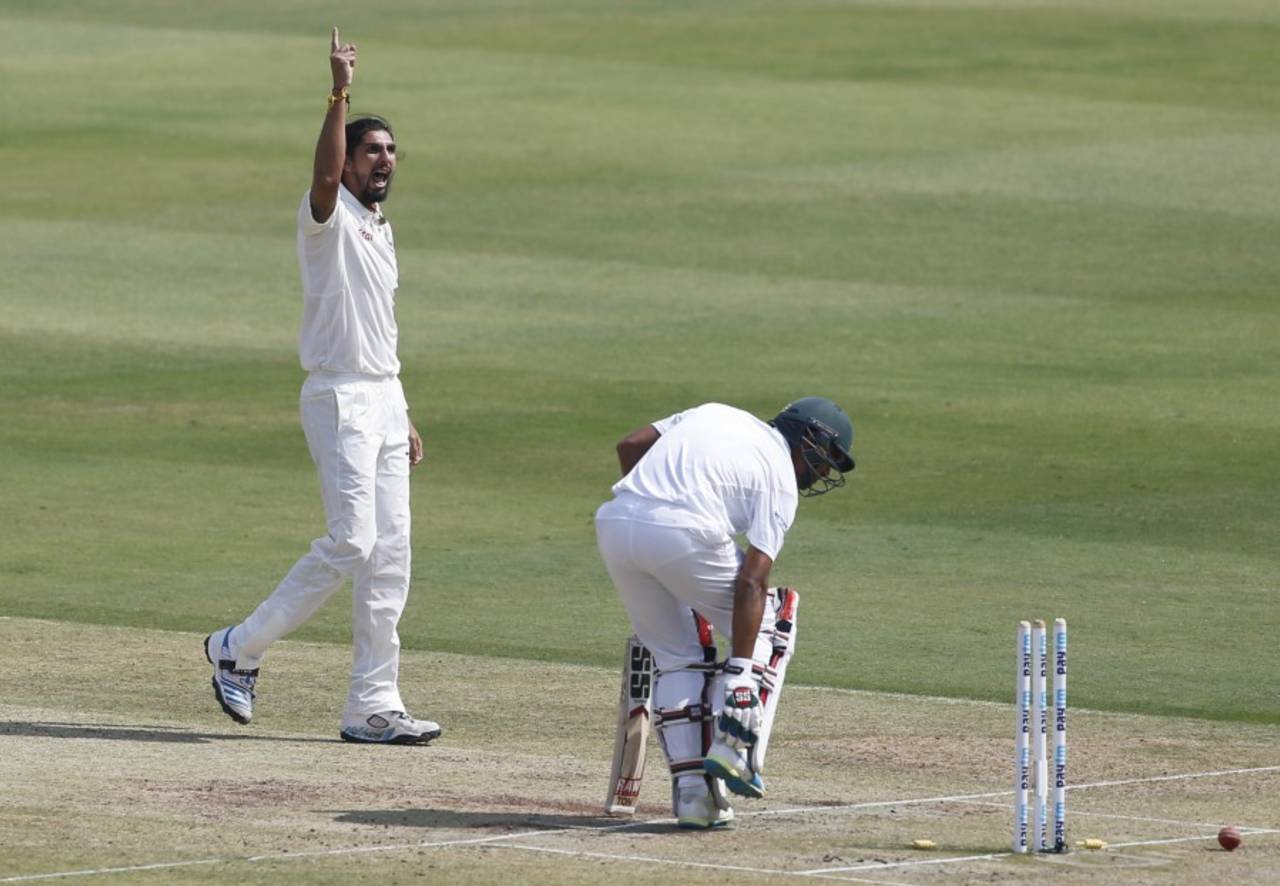India's seamers impress with lengths, reverse
Aakash Chopra takes a deeper look at the performance of India's quicks on day three of the Hyderabad Test
Aakash Chopra
11-Feb-2017

Ishant Sharma and Umesh Yadav picked up an lbw each with early reverse-swing • Associated Press
Early reverse-swing
India's seamers got the ball to reverse-swing in the 14th over itself. Getting the ball to reverse so early gives a bowling team an extra dimension. Since you need extra pace to make the ball swing late, fresh arms and legs are always of great help. If the ball is really old, it tends to come back in quite sharply while attempts to take it away don't produce the same result. At the most, the ball holds its line creating the illusion of it going away. But the newer ball moves away easily and India's seamers, especially Umesh Yadav, used it well.
Seam position while the ball is reversing
For orthodox outswing, you point the seam towards first slip and have the shiny side facing midwicket. When it's reversing, you do exactly the same thing to extract inswing. The seam position and the wrist behind pushes the ball towards off stump and it tails back in only after the ball loses some speed. Also, the batsman gets a little confused with the seam position, for once in a while the ball, especially when it's not that old, doesn't move with the shine and goes on straight instead.

Where Bangladesh's seamers' lengths were on the shorter side...•ESPNcricinfo Ltd
Bangladesh miss, India don't
On the first day, both Pujara and Vijay were almost stranded at the same end but Bangladesh goofed up an easy run-out chance. There are multiple factors that play a role when a run-out opportunity arises - firstly, you must keep the eyes on the ball to collect cleanly and resist the temptation to look at what the batsmen are doing. You must follow it up with a proper throw by either throwing on the full or ensure that it bounces much before the guy who's collecting close to the stumps. Last but not the least, the person responsible for collecting the ball and dismantling the stumps should also avoid looking at where the batsman is, for collecting cleanly is the first priority. When Tamim Iqbal ran towards the bowler's end after a mix-up with Mominul Haque, Umesh's throw was both fast and accurate and Bhuvneshwar Kumar kept his calm while collecting and throwing the stumps down. It looks very simple when it comes off, but the factors involved make it fairly complicated.
India's seamers find the right length
Just comparing the pitch-maps of fast bowlers from both sides will tell you why there's a stark difference in the impact they made. Yes, the Indian seamers are more skilled but one of the reasons for that is knowing the right length and staying there. India's seamers have bowled a lot fuller than the Bangladesh seamers.

... India's quicks focused on bowling full and got the ball to reverse•ESPNcricinfo Ltd
Mushfiqur vs pace
Mushfiqur Rahim has seen the shine better than any other Bangladesh batsman and therefore he's looked the most comfortable. He's also got this unique technique of having an almost non-existent front-foot stride. He makes up for it by waiting for the ball and not going towards it with the hands. Perhaps, there was a case for India's seamers to have tried to bowl a lot fuller early in his innings.
Aakash Chopra is the author of three books, the latest of which is The Insider: Decoding the craft of cricket. @cricketaakash